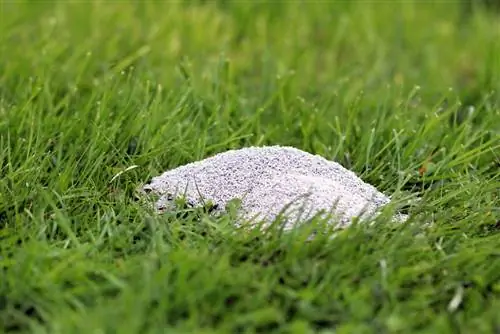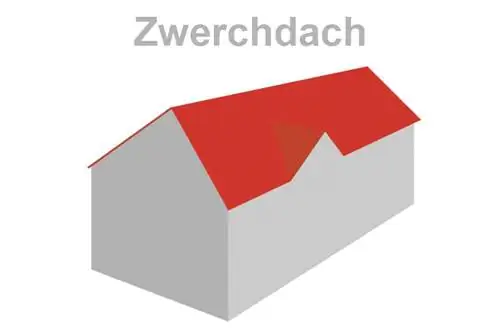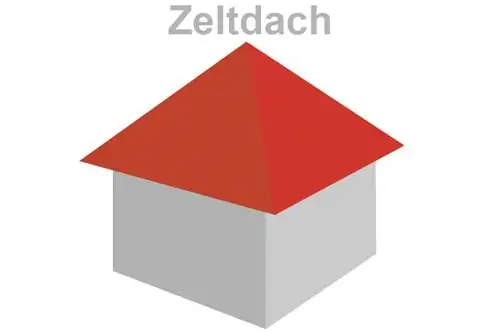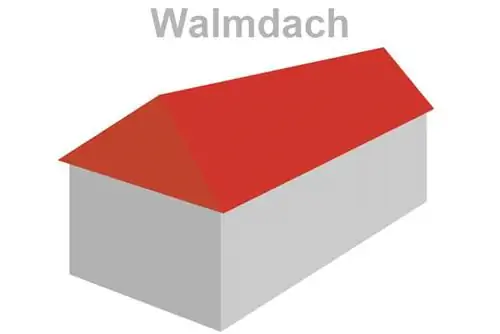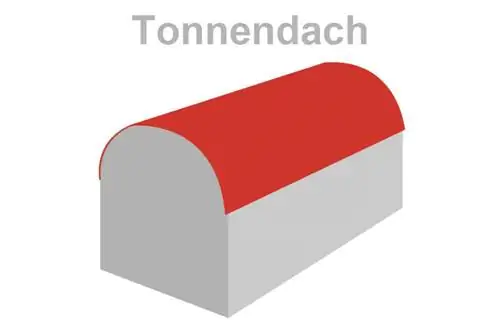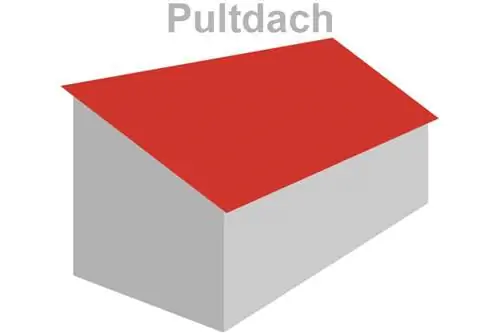- Author admin [email protected].
- Public 2023-12-17 03:39.
- Last modified 2025-01-24 12:45.
Fertilizers provide plants with valuable nutrients that, among other things, promote growth or resistance to pests and weather, so that they feel comfortable in their home.
Fertilizers
Fertilizers or fertilizers are offered in a wide variety of forms: liquid, solid, granules or in the form of sticks. A distinction is also made between so-called universal fertilizers and special fertilizers. Fertilizers are further classified according to their components. A distinction is made between organic and mineral applications. Potassium nitrate fertilizers are mineral fertilizers.
Chemical composition and properties
Potassium nitrate is the potassium s alt of nitric acid. That's why the s alt is often called s altpeter or potassium s altpeter. In nature it occurs mainly in China and Southeast Asia, but today it is mainly obtained synthetically from nitric acid. The acid itself is an inorganic substance, the most stable mineral acid of nitrogen. Their s alts are called nitrates. Chemically speaking, potassium nitrate consists of these elements:
- Oxygen (O)
- Nitrogen (N)
- Potassium (K)
The chemical formula is KNO3. The fertilizer is therefore mineral and nitrogen fertilizer at the same time. S altpeter forms colorless crystals that dissolve in water. Potassium nitrate dissolves best in warm water. Potassium s altpeter is not only found in plant fertilizers. As E 252 it is also used as curing s alt to preserve food; Additionally, potassium nitrate is the main ingredient in black powder. And it's even found in toothpastes for sensitive teeth.
Potassium nitrate is hygroscopic, but it does not bind water as strongly as sodium nitrates, for example. Since potassium nitrate is slightly oxidizing, pure KNO3 should be handled very carefully.
Use as plant fertilizer
Potassium, along with nitrogen and phosphorus, is one of the core nutrient elements of a plant. In other words, potassium is essential for the survival of every plant, be it commercial or ornamental, as plants need the mineral to absorb water. That's why indoor or potted plants in particular should be supplied with sufficient quantities of them. The amount actually needed depends of course on the individual plant. Plants with high potassium requirements include:
- Tomatoes
- Pumpkins
- Cucumbers
- Potatoes
- Aquatic plants (aquarium)
Ornamental plants that are grown in pots or buckets need an average of 49 grams of potassium per kilogram of soil.
Tip:
For planted plants, it is recommended to carry out a soil analysis before using potassium nitrate fertilizer, as too much potassium can also be harmful to the plants.
Potassium helps plants absorb other nutrients better. This means they thrive better and higher yields can be achieved from crops. But the positive properties of potassium go even further:
- Improving fruit firmness and color
- Improving frost resistance by regulating the water balance
- promotes winter resistance
- Reducing susceptibility to pests by strengthening cell walls
- Prevention of fungal infestation
- Promotes reserve material formation
So that plants can absorb potassium better, they need nitrate nitrogen. It can be absorbed immediately by the plants and in turn promotes growth. In addition to potassium, nitrate nitrogen also ensures that calcium and magnesium can be better absorbed by plants.
Potassium deficiency and excess
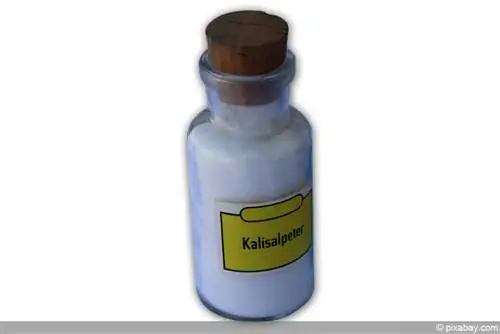
Fertilizers are generally used to provide plants with the appropriate nutrients. As plant food, in addition to water and carbon dioxide, they should be given regularly during the growing season. Not giving nutrients can lead to deficiency symptoms. You recognize a potassium deficiency:
- leaves bleached in places (chlorosis), yellowing
- brown discoloration of the leaves (necrosis, death of the leaf tissue)
- the leaves dying from the edge
- a low stability of the plant
- Growth disorders
- the bursting of fruits (especially tomatoes)
Overall, the plant appears limp when there is a potassium deficiency. Too much potassium in the soil can also cause damage to the roots, causing the roots to burn, causing them to die.
Tip:
Poor crumb structure of the soil is a good indication of an excess of potassium in the soil.
Although potassium is necessary for plant survival, an excess of potassium is just as harmful to the plant as a deficiency of the core nutrient. If plants get too much potassium, they can no longer absorb the important nutrient magnesium, which is necessary for many metabolic processes in the plant, including photosynthesis. At the same time, an excess of magnesium inhibits the absorption of potassium. There is also an interaction during absorption with calcium. An excess of potassium can make it more difficult to absorb, which in turn can lead to reduced growth.
Tip:
If the plant suffers from an excess of potassium, further addition of the nutrient should be suspended for the time being. In addition, you may need to give more magnesium to bring the plant back into balance.
Potassium nitrate fertilizer in stores
Potassium nitrate fertilizer can be purchased from hardware stores or specialist retailers. The special fertilizer can often be found under the name NK fertilizer. “NK” stands for the substances it contains, nitrate nitrogen and potassium. So that potassium nitrate can also be used to produce explosives and other pyrotechnic mixtures, you may be asked for your ID upon purchase. Universal fertilizer is available under the name N-K-P fertilizer. They contain the core elements nitrogen (N), potassium (K) and phosphorus (P). The proportion of the individual nutrients varies depending on the fertilizer.
In addition to universal fertilizers, potassium can also be found in so-called combination potassium fertilizers. In addition to potassium, these fertilizers also contain magnesium, sulfur or sodium. There is special potassium s altpeter for aquatic plants in the aquarium. They are available in liquid form not only at hardware stores, but also at pet supply stores. You should not use commercially available N-K-P fertilizers for aquarium plants. They may contain unidentified copper content, which is dangerous, if not fatal, to fish and snails.
Tip:
It is often said that potassium nitrate can also be purchased from a trusted pharmacy. Since in this case you are often associated with “bomb makers”, this source of supply is not recommended, especially in this day and age, for well-known reasons.

